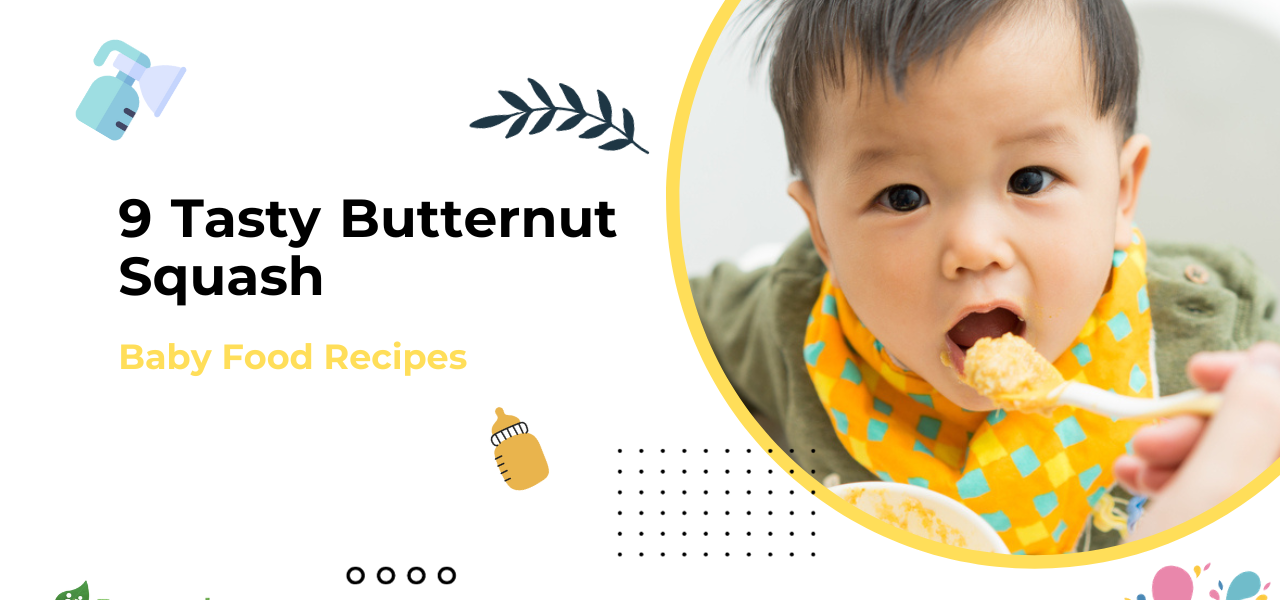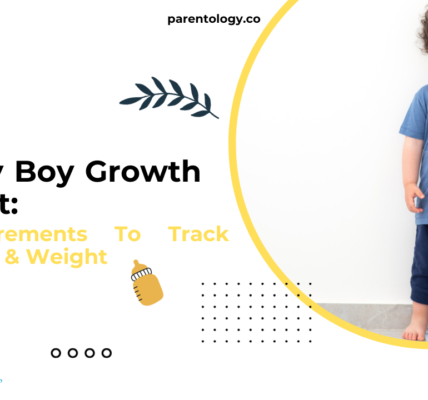Welcome to a flavorful journey into the world of butternut squash baby food! As a parent, providing your little one with nutrient-rich and delicious meals is a top priority. Butternut squash is an excellent choice due to its gentle taste, abundant nutrients, and versatility in creating delectable recipes. In this article, we’ll explore nine tantalizing butternut squash baby food recipes that will have your baby eagerly reaching for the spoon.
Why Opt for Butternut Squash for Your Baby?
- Nutrient-rich: Loaded with vitamins crucial for healthy growth.
- Gentle on Tummies: Easily digestible and suitable for infants.
- Versatile: Offers various ways to introduce it into your baby’s diet.
Nutritional Value of Butternut Squash
Butternut squash is a powerhouse of essential vitamins and minerals that are crucial for a baby’s healthy growth and development. Here’s a closer look at its nutritional profile:
- Vitamin A: Vital for vision development and immune function.
- Vitamin C: Supports the immune system and aids in iron absorption.
- Potassium: Important for maintaining healthy blood pressure and heart function.
- Fiber: Promotes healthy digestion and bowel movements.
The abundance of these nutrients makes butternut squash an excellent addition to your baby’s diet, contributing to their overall well-being.
Preparation Techniques for Butternut Squash Baby Food
When preparing butternut squash for your little one, there are various cooking methods to consider:
- Steaming: This method helps retain the most nutrients. Simply chop the squash into cubes, steam until tender, and blend into a smooth puree.
- Roasting: Roasting butternut squash enhances its natural sweetness. Cut the squash in half, remove seeds, roast until soft, then scoop out the flesh for pureeing.
- Boiling: Similar to steaming, boiling involves cooking cubed squash until soft. Drain excess water and blend for a smooth consistency.
Experimenting with different cooking techniques allows you to find the texture and flavor profile that your baby prefers.
Versatility in Butternut Squash Baby Food
Beyond the purees and mashes, butternut squash can be incorporated into various other baby-friendly meals:
- Butternut Squash Soup: Create a mild and creamy soup by blending cooked butternut squash with a bit of broth or water. Ideal for introducing new flavors to your baby.
- Butternut Squash Fries: Cut butternut squash into stick shapes, lightly coat with olive oil, and bake until tender. A nutritious finger food option for older babies exploring textures.
- Butternut Squash in Pasta: Blend cooked butternut squash into a smooth sauce to toss with pasta. This introduces different textures and flavors in a familiar dish.
Butternut Squash Safety and Selection Tips
- Selecting: Look for squash with firm, unblemished skin and a dull, matte finish. Avoid those with soft spots or cuts.
- Storing: Keep whole butternut squash in a cool, dry place. Once cut, store in the refrigerator and use within a few days.
- Peeling and Seeding: Peeling and seeding butternut squash can be challenging. Opt for pre-cut squash or use a vegetable peeler and a sturdy knife for safe preparation.
Incorporating Butternut Squash into Family Meals
Butternut squash isn’t just for babies! It’s a versatile ingredient that can enhance various family dishes. From soups and stews to salads and side dishes, this nutrient-rich veggie adds depth and flavor to meals enjoyed by the whole family.
Health Benefits of Butternut Squash for Babies
Before diving into the recipes, let’s highlight the nutritional benefits of butternut squash for your baby’s development:
- Rich in Nutrients: Butternut squash is packed with essential nutrients like vitamin A, C, potassium, and fiber, promoting healthy growth and immune function.
- Gentle on Digestion: Its mild flavor and soft texture make it gentle on your baby’s developing digestive system.
- Boosts Vision: The high content of vitamin A supports eye health, aiding in better vision development.
- Supports Bone Health: Potassium and calcium in butternut squash contribute to strong bones and teeth.
9 Delicious Butternut Squash Baby Food Recipes
-
1. Butternut Squash Puree
- Ingredients:
- Butternut squash
- Water or breast milk
- Instructions: Steam or roast peeled and cubed squash until tender, then blend with water or breast milk to achieve a smooth consistency.
- Ingredients:
-
2. Butternut Squash and Apple Mash
- Ingredients:
- Butternut squash
- Apple
- Cinnamon (optional)
- Instructions: Steam squash and apple slices until soft, then mash together. Add a pinch of cinnamon for extra flavor.
- Ingredients:
-
3. Butternut Squash and Carrot Blend
- Ingredients:
- Butternut squash
- Carrots
- Vegetable or chicken broth
- Instructions: Cook squash and carrots until fork-tender, then puree with broth for a creamy texture.
- Ingredients:
-
4. Butternut Squash and Banana Smoothie
- Ingredients:
- Butternut squash
- Banana
- Yogurt (optional)
- Instructions: Blend cooked butternut squash, ripe banana, and yogurt for a delightful smoothie.
- Ingredients:
-
5. Butternut Squash Risotto
- Ingredients:
- Butternut squash
- Rice (preferably Arborio)
- Low-sodium chicken or vegetable broth
- Instructions: Cook rice in broth, adding pureed squash for a creamy, nutrient-packed risotto.
- Ingredients:
-
6. Butternut Squash and Chicken Puree
- Ingredients:
- Butternut squash
- Cooked chicken breast
- Olive oil (optional)
- Instructions: Blend cooked squash with chicken and a drizzle of olive oil for a protein-rich puree.
- Ingredients:
-
7. Butternut Squash and Lentil Soup
- Ingredients:
- Butternut squash
- Red lentils
- Onion, garlic (optional)
- Instructions: Simmer squash, lentils, and aromatics until soft, then blend for a hearty soup.
- Ingredients:
-
8. Butternut Squash Pancakes
- Ingredients:
- Butternut squash
- Pancake mix or flour
- Eggs, milk
- Instructions: Combine grated squash with pancake batter for nutritious and tasty pancakes.
- Ingredients:
-
9. Butternut Squash and Blueberry Porridge
- Ingredients:
- Butternut squash
- Blueberries
- Oats
- Instructions: Cook squash, blueberries, and oats for a fruity and nutrient-packed porridge.
- Ingredients:
FAQs about Butternut Squash Baby Food
Q 1. Can I freeze butternut squash baby food for later use?
Ans 1: Absolutely! Freeze justifyover purees in ice cube trays for convenient portions to thaw and serve later.
Q 2. At what age can babies start eating butternut squash?
Ans 2: Babies can generally start eating butternut squash puree around 6 months of age, following pediatrician recommendations.
Q 3. Are there any allergy concerns with butternut squash for babies?
Ans 3: Butternut squash is low in allergens and is typically well-tolerated. However, it’s wise to introduce new foods one at a time to watch for any adverse reactions.
Q 4. How can I make butternut squash baby food thinner or thicker?
Ans 4: Adjust the consistency by adding breast milk, formula, or water to thin purees or mashing in other ingredients for a thicker texture.
Q 5. Can I combine butternut squash with other fruits or vegetables?
Ans 5: Yes! Combining with apples, carrots, bananas, or blueberries can add variety and more nutrients to your baby’s meals.
Q 6. Is it necessary to peel butternut squash before cooking for baby food?
Ans 6: Peeling the squash is recommended to remove the tough outer skin, ensuring a smoother texture for your baby.
Q 7. Can I add spices or herbs to butternut squash baby food?
Ans 7: It’s best to avoid adding spices or herbs initially. Introduce one ingredient at a time to monitor any adverse reactions.
Q 8. How can I store prepared butternut squash baby food?
Ans 8: Refrigerate justifyovers in an airtight container for up to 3 days or freeze in appropriate portions for up to 3 months.
Q 9. Are there any specific cooking methods best suited for butternut squash baby food?
Ans 9: Steaming, roasting, or boiling are popular methods. Steaming helps retain more nutrients, while roasting adds a depth of flavor.
Q 10. What are the nutritional advantages of incorporating butternut squash into my baby’s diet?
Ans 10: Butternut squash offers essential vitamins and minerals vital for your baby’s growth, including vitamin A, C, and potassium.
Conclusion
Butternut squash serves as an ideal introduction to solid foods for your little one, offering a spectrum of health benefits and delightful flavors. Experimenting with these recipes will not only nourish your baby but also tantalize their taste buds. For more parenting insights and diverse recipes, explore Parentology’s resources.
Remember, each baby is unique; consult your pediatrician before introducing new foods. Embrace this culinary journey with your little foodie, savoring every spoonful of joy and nourishment!
Remember to visit Parentology for a comprehensive guide on butternut squash baby food recipes and nurturing your baby’s health.





